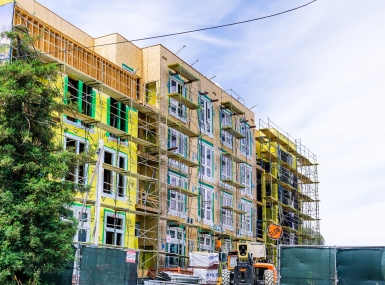DOE announces competitive Energy Efficiency and Conservation Block Grant Program funding
Author
Upcoming Events
Related News

Key Takeaways
On April 5, the U.S. Department of Energy (DOE) announced the availability of $8.8 million in competitive funds under the Energy Efficiency and Conservation Block Grant (EECBG). Funded through the Bipartisan Infrastructure Law (BIL), the competitive piece of the EECBG Program will award grants to local governments and other eligible entities to implement strategies to reduce emissions, decrease total energy use and improve energy efficiency. Eligible entities must submit their concept papers by June 5 to be eligible for the full application, which is due July 31, 2023.
Counties that were ineligible to receive a formula grant under the EECBG program can apply for funds under this announcement.
DOE anticipates making 10 – 20 awards under the competitive portion of the EECBG program, with awards ranging between $200,000 to $2 million. Priority will be given to applicants in states and territories with populations below 2 million, including:
- Alaska
- Delaware
- Hawaii
- Idaho
- Montana
- Nebraska
- North Dakota
- South Dakota
- West Virginia
- Wyoming
Eligible Uses
Counties can apply for grants under one of two tracks:
- Planning, analysis, and strategy development
- Implementation and scaling
Eligible uses of EECBG funds within either of these tracks include:
- Development and implementation of an Energy and Conservation Strategy;
- Retaining technical consultant services to assist the eligible entity in the development of such a strategy;
- Conducting residential and commercial building energy audits;
- Establishment of financial incentive programs for energy efficiency improvements;
- The provision of grants to nonprofit organizations and governmental agencies for the purpose of performing energy efficiency retrofits;
- Development and implementation of energy efficiency and conservation programs for buildings and facilities within the jurisdiction of the eligible entity;
- Development and implementation of programs to conserve energy used in transportation;
- Development and implementation of building codes and inspection services to promote building energy efficiency;
- Application and implementation of energy distribution technologies that significantly increase energy efficiency;
- Activities to increase participation and efficiency rates for material conservation programs, including source reduction, recycling and recycled content procurement programs that lead to increases in energy efficiency;
- The purchase and implementation of technologies to reduce, capture and, to the maximum extent practicable, use methane and other greenhouse gases generated by landfills or similar sources;
- Replacement of traffic signals and street lighting with energy efficient lighting technologies;
- Development, implementation and installation on or in any government building of the eligible entity of onsite renewable energy technology that generates electricity from renewable resources; and
- Programs for financing energy efficiency, renewable energy, and zero-emission transportation (and associated infrastructure), capital investments, projects and programs, which may include loan programs and performance contracting programs, for leveraging of additional public and private sector funds and programs that allow rebates, grants or other incentives for the purchase and installation of energy efficiency, renewable energy and zero-emission transportation (and associated infrastructure) measures
DOE will host two webinars on the competitive piece of the EECBG program, you can register here:
April 18 at 2 p.m. ET
May 15 at 2 p.m. ET
Counties play a crucial role in reducing national emission levels through the deployment of clean and renewable energy, among other initiatives. Counties support increased financial and technical assistance to local governments to help develop and implement local climate change adaptation and mitigation plans and projects, including renewable energy deployment.
NACo played a critical role in securing funds for the EECBG Program in the BIL and is pleased that DOE is taking actionable steps to award these additional competitive grants to counties.
To learn more about the formula portion of the grants, read NACo’s blog on it here.
Related News

County Countdown – March 25, 2025
Every other week, NACo's County Countdown reviews top federal policy advocacy items with an eye towards counties and the intergovernmental partnership. This week features budget reconciliation, FY 2025 funding and more.

CEQ issues interim final rule on implementing NEPA regulations
On February 25, the Council on Environmental Quality (CEQ) issued an interim final rule to remove existing federal regulations on P.L. 91-190, the National Environmental Policy Act (NEPA), and rescind CEQ’s authority to promulgate NEPA regulations. CEQ issued a memo on February 19 asserting that any federal agencies implementing regulations should prioritize streamlining and expediting NEPA’s permitting process. The rule is effective April 11, 2025.
Resource
Implementing Infrastructure Investments at the County Level: The Bipartisan Infrastructure Law (P.L. 117-58)


